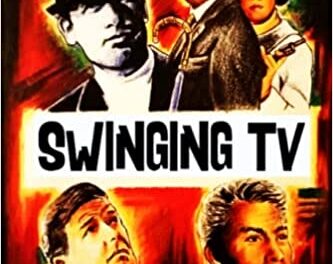In April 2013 I walked the Pennine Way – a 268-mile trek from Edale in Derbyshire up the spine of England and into Kirk Yetholm in Scotland. Almost exactly two years later, on 24th April 2015 the Pennine Way reached its 50th anniversary as the first national trail in the UK. To celebrate, the BBC produced a four-part series about the trail hosted by Paul Rose. The programme examined the historical origins of the trail, which had its roots in the protests on Kinder Scout in the 1930s for ramblers to have the ‘right to roam’ across England’s countryside. The fight for a national trail in England was not simply about escape, but also a political battle between the rights of landowners and citizens about who owned the country. As one campaigner, Sylvia Franks, claimed in the programme, ‘We fought for this country. We fought for the rights. We fought to be free men. And we want to walk our countryside.
The combination of archive footage, interviews and long shots of the trail’s dramatic landscape in this episode is characteristic of the style of this documentary. Each episode explores one part of the Pennine Way combining shots of Rose trekking on short sections of the trail with longer sequences in which he learns more about the environment within which he is walking. Here the episodes highlight the history of this stretch of England from the working conditions of its lead mining industry to the literary inspiration of the South Pennines for the novels of the Brontes. Rose also tries his hand at a range of adventurous outdoor activities, from rock climbing in dramatic Malham Cove to white water rafting over Low Force in the river Tees.
In this respect, the series works hard to promote the culture, nature and heritage of these regions of rural northern England and the value of the countryside as a site of labour, leisure and adventure. Indeed, the series is positioned as being for and about the north of England, having been broadcast on BBC One but only in the regions of Yorkshire and Lincolnshire, the North East and Cumbria, the North West, and Yorkshire (although all episodes were available through the BBC iPlayer and look to be broadcast nationally on BBC Two this summer). In fact, it was only because I happened to be walking in Yorkshire this Easter, retracing a few favourite sections from the trail, that I chanced across a reference to the programme in a tourist brochure.
Despite being a celebration of a walking trail, then, The Pennine Way is far less about walking than other programmes about UK trails, such as Wainwright Walks: Coast to Coast (BBC, 2009). In this latter series, presenter Julia Bradbury did actually take on the challenge of walking the entire 192-mile route from the west to the east coast of England.
Using aerial footage, combined with voice-overs from Alfred Wainwright’s classic guide to the trail, this series is far more interested in explaining the nature of the walk itself. In fact, Wainwright Walks is very much focused on celebrating Wainwright as the trail’s creator and a strong advocate for walking, particularly in the Lakeland fells. The series contains far more shots of Bradbury walking and explaining the features of the landscape around her than in The Pennine Way. Typically the programme depends on static shots as she walks to or away from the camera, interspersed with a few steadicam sequences following her along the route and aerial shots that offer majestic views of the dramatic countryside. In this sense, Wainwright Walks is far more successful than The Pennine Way in conveying the experience of undertaking a long distance walk in the UK.
However, as an avid hiker, I have been struck by how difficult television seems to find it to capture the experience of walking, despite the fact that is has been the subject of a number of documentaries over the past decade in response to a growing interest in hiking as a pastime within the UK. What is missing from these documentaries in particular is what it feels like to walk through a landscape. This is not only the physical sensation of foot striking ground or rain lashing face, but the sense of passing through space and witnessing the landscape moving around you. It is the sensation of looking back over where you have walked and forward towards where you are to go, of seeing how the landscapes and vistas shift as you are afforded constantly changing perspectives on the countryside you pass through. It is also the way in which the experience of walking becomes all encompassing, calling your mind to concentrate on the task at hand (not losing your footing, not getting lost) while equally freeing it to wander into unstructured thinking in ways that I always find generative and restorative. Indeed, on my walking holidays now I frequently prefer to take short videos with my ipod held at shoulder height as these are far more effective in capturing the sensation of the walk than a photograph. (The video below comes from a wonderful holiday last September in the Spanish Pyrenees.)
These shaky, amateurish videos are also a useful reminder of the technological challenges of videoing while walking, both in terms of managing the weather and (in this instance) the rise and fall of the bodies’ movements which Steadicam was designed to compensate for.
Of course, the moving image is never going to be able to capture fully the physical experience of undertaking a walk. But two recent movies about walking have been far more effective in conveying what it is like to undertake a long distance hike than these television series. The movie Wild (2014), based on Cheryl Strayed’s wonderful book about walking the Pacific Crest Trail in the US, uses a far more impressionistic style to convey the physical and psychological experiences of long distance walking. Unfortunately none of the clips on YouTube show the walking sequences from the movie, but the first twenty seconds of this featurette about the movie give some sense of the ways in which the film uses techniques such as rapid cuts, interior voice-over and point of view shots to take the viewer inside the head of the walker.
In this regard, Wild has much in common with the less well-publicised Tracks (2013), which uses similar conventions to tell the extraordinary real story of Robyn Davidson’s 2000-mile trek across the Australian dessert.
It is, perhaps, unfair to contrast television documentary series with these far more personalised stories about the psychological challenges and rewards of long-distance walking. Clearly the aims and intentions of series like The Pennine Way and Wainwright Walks are quite different from these movies, whose focus is on using walking to explore the psychological journey of the central characters. At the same time, however, television’s propensity towards seriality, which gives it the ability to trace journeys over time would seem to make it ideally suited to explore what it actually feels like to undertake a long distance walk. It was for this reason that I was fascinated to see BBC Four broadcast an uninterrupted two-hour canal boat journey, All Aboard! The Canal Trip, on Tuesday 5 May. With no voice over, just the hum of the canal boat and the sounds of the changing landscape, this hypnotic programme invited the viewer to immerse themselves in the sounds and images that make up the experience of travelling by canal boat. The programme was part of BBC Four’s ‘Slow TV’ series, inspired by the success of slow TV for Norwegian public service broadcaster NRK. In 2009 NRK broadcast a seven-hour train journey from Bergen to Oslo shot using a camera mounted on the front of the driver’s carriage, with no commentary or music. Other programmes in Norway’s slow TV movement have included eight uninterrupted hours of a burning fireplace and 134 continuous hours of the voyage of a ship from Bergen to Kirkenes. BBC Four’s series also included three thirty-minute programmes capturing the process of crafting objects by hand and Dawn Chorus: the Sounds of Spring (conveying the dawn chorus in three different UK locations), with each programme placing a strong emphasis on observing things as they happened.
In All Aboard! The Canal Trip, the camera starts in long shot, behind the canal boat as it enters a lock. It then moves onto the boat itself, as we observe the water rushing into the lock. Graphics providing the programme’s title and the name of the canal are superimposed over the lock gates themselves, akin to plaques or etchings in the landscape.

Once the lock gates open we begin our slow and gentle journey along the canal. At moments throughout the journey short pieces of text emerge within the landscape (on the canal water, on bridges and on boats). At other moments the film superimposed archival photographs over the image to create the experience of moving through the past (see the point at 17 minutes for example).
These moments convey the kind of information that would typically be provided through voice over or interview. Far from a distraction, historical and factual information here becomes part of the landscape and the journey. In doing so, the programme makes everything about the journey to do with the experience of travelling through the landscape of the canal. While I have never been on an canal boat, this programme was far more effective at capturing the sensation of moving through a living landscape that encapsulates walking than any of the many TV series that have been produced about hiking.
All Aboard! The Canal Trip captured an audience of half a million on its initial broadcast. While some viewers complained on Twitter that it was the most boring programme ever broadcast, others praised it as a ‘proper telly programme’. The season’s programmes certainly have resonances with the intervals that were broadcast by the BBC in 1940s and 1950s, such as the sight of waves or a potter’s wheel.
While these early intervals were designed to encourage discriminating viewing, slow TV is positioned by the BBC as a different kind of interruption – a break from the emphasis on rapid editing, heightened drama and over-scoring that characterises much contemporary television documentary, and an invitation to watch in quiet contemplation. It is also cheap television, a means of being innovative while filling airtime for our cash strapped public service broadcasters. What should be celebrated about this programming is the attempt to convey a different kind of experience. While The Pennine Way and Wainwright Walks work almost too hard to make their content interesting, All Aboard! The Canal Tripinvites the viewer to find interest within the journey and within the landscape itself. Although journeys of various kinds seem to be a favourite subject matter for slow TV, I am not aware of any programmes within this movement that have taken on the subject of walking. It would be interesting to see whether the emphasis on capturing experience as it happens and working to convey a sense of movement through landscape, might translate to the even slower experience of walking and whether this might go someway towards conveying the wonderful experience of walking through the countryside that makes it such a rewarding pastime.
Catherine Johnson is Associate Professor at the University of Nottingham. She is the author of Branding Television (Routledge, 2012) and Telefantasy (BFI, 2005) and the co-editor (with Andreas Fickers) of Transnational Television History (Routledge, 2012) and (with Rob Turnock) of ITV Cultures: independent television over fifty years (Open UP, 2005). Her latest book is The Promotional Screen Industries (Routledge, 2015), co-authored with Paul Grainge. Her research is characterised by an interest in the production cultures of the media industries (primarily television) and she pursues this through both contemporary and historical research. She is currently researching the development of online television.




